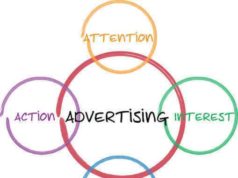
Some forms of deceptive advertising
Deceptive advertising uses fillers primarily to make consumers think they are purchasing something more valuable than it actually is, by bulking up its size without keeping its quality consistent.
A primary example of such deceptive advertising is in pet food, as fillers are often used in the food in order to simply bulk up the size of the pellet and the overall amount of food being produced at a lowered cost to the manufacturer. Non-nutrient ingredients are often included in animal food as filler, simply in order to increase the food size, so that consumer perception of the food and its value will similarly increase.
Such non-nutrient ingredients are not entirely without value, of course, as they do add fiber to the food, which some pet dietitians believe is important for the pet's health. But other dietitians have argued in the opposite, that most filler is actually low-grade fiber that does nothing to help with the overall nutrition of the food, and actually can hurt the animal more than it can help.
The use of filler often does not correlate to false claims, either. A pet food company might still be able to claim that a given pet food product does, actually, contain certain components, without that claim being diminished by the presence of filler in the food. As long as the pet food company does not, for instance, say that certain things are included in the pet food that are not really there, or say that there is a certain ratio of components which is false, thanks to the filler, then the company will have made no false claims. This is part of the reason why filler is actually a dangerous element for the consumer attempting to see past deceptive advertising.
Over-sized packaging is something of the inverse of filler, but it is a similar form of deceptive advertising. Instead of bulking up the product itself with unnecessary, non-beneficial components, the packaging is simply bulked up, as a simulation of the presence of filler. Imagine that, instead of a dog food bag being primarily filled with pellets, 75% of which are filler, you instead put into the dog bag only those parts of the pellets which are clearly and inarguably good for the dog.
You would then have to pad out the size of the bag in order to convince the consumer that he or she is still buying a valuable amount of product, as distilling the actual healthful elements of dog food would likely lead to a significantly reduced overall product size. Over-sized packaging is deceptive advertising based on this principle, and it makes the implicit false claim that there is more product within the packaging than there would appear to be.






















